-
Posts
1,625 -
Joined
-
Last visited
Content Type
Profiles
Forums
Blogs
Gallery
Events
Store
Posts posted by NavyFCO
-
-
"Omer Bredli" is what it says. God knows what they did to "Eisenhower!"

Well, if you can read the scan...

I don't want to give away too many of these, after all I need to have something in my JOMSA article!
Regarding US Awards to Soviets, I was just offered a Legion of Merit certificate and citation to a Soviet NCO. It was a bit too pricey for my blood though, so I had to pass....

Dave
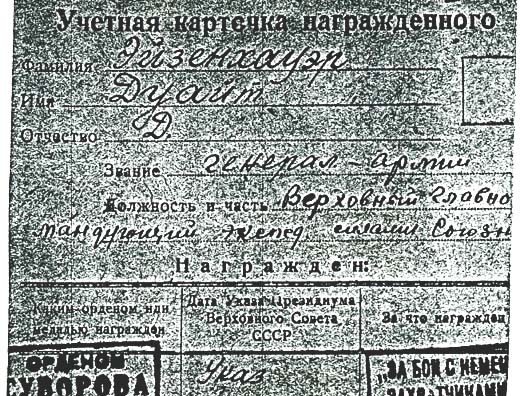
 0
0 -
And here's a scan of the Marshal's name and signature....
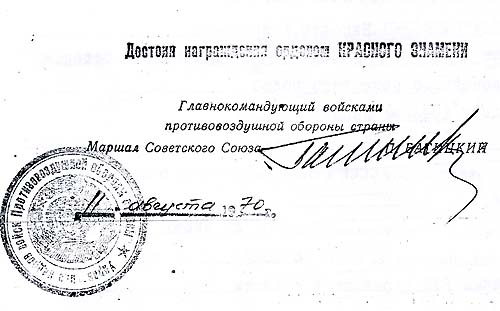
 0
0 -
Dave-
WOW! Thanks for that info!

I actually have no more information on this citation than what's there. Interesting is the reverse as well, since it was bottom-lined by none other than Marshal of the Soviet Union Batitskii... So he was recommended for the award by a General Colonel, and then approved by a Marshal of the Soviet Union. Rather high level, I think!
Unfortunately, there's not much more to add than this. I have the award that was a single eBay pickup, and now his award card and citation.
Still pretty cool, I think!
Dave
0 -
And the reverse...
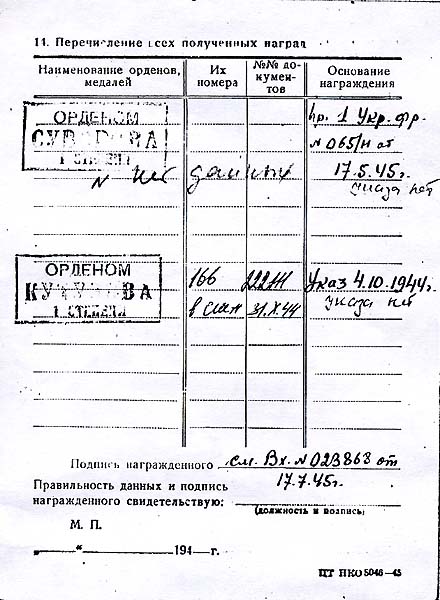
 0
0 -
I bet you all haven't seen an award card like this before!
I'll let folks stretch their Cyrillic reading abilities to figure out who this award card belonged to...

Dave
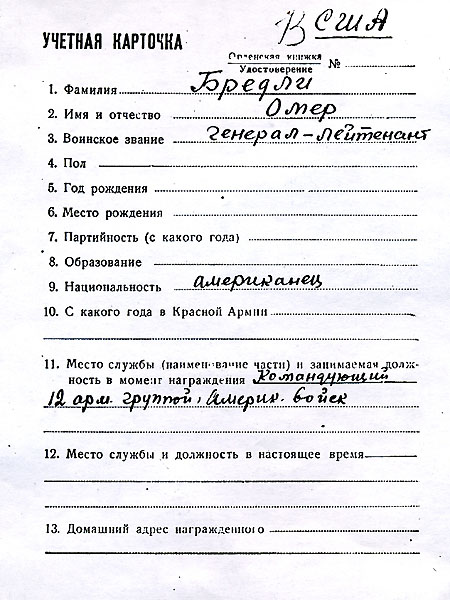
 0
0 -
Here's a citation I received for a Red Banner in my collection today. Anyone want to venture a guess as to where this fellow shot down these aircraft?

Dave
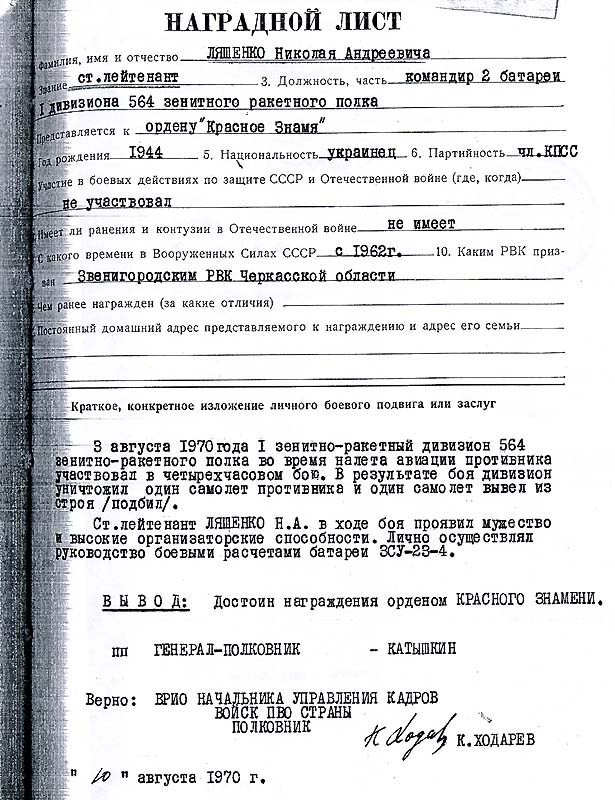
 0
0 -
I hate to rain on the parade, but I'm not a fan of the order book. First, I've only seen order books with the Suvorov and OGPW award stamp fonts in order books that have been messed with. A bad omen. Second, the penned in numbers also appear to be close to some of the bad award books I've seen - a lot closer to the bad award books than to the good award books. Third, the Red Banner "2" number doesn't seem to be in order with the rest of the awards - and unless I'm mistaken (my books aren't available at the moment) it appears to be a postwar award. Fourth, I've seen a lot of odd award groups, but none that would award a For Valor medal after a Lenin, Suvorov and two Red Banners. There are a few other things with the order of the awards (and from some that are missing or are there) that I'm not fond of as well.
To me, this book would go in the "bad" category until it can be researched and the award card prove that the book is correct.
Dave
0 -
Really . . . you have me very confused now, Dave.
See: http://gmic.co.uk/index.php?showtopic=2326
(Reminding me, of course, that I need to get together some scans for you . . . oops.)
Ed-
Don't be too confused.... The RSFSR Red Banners were another case altogether, rather than the "normal" Soviet awards - Red Banners, Lenins, etc. Should this one have been returned to the state? Sure, it probably should have. However, there's any number of reasons that it wasn't, ranging from the fact that it was RSFSR vice USSR (probably the main reason, I believe) the fact that he was a general (they still took their awards back though) it may have been put in a museum after his death and later sold out of the museum or, it simply may have fallen "through the cracks" which I'm sure is possible, though unlikely. I've encountered a full Glory Cavalier group to a KIA that was never taken back by the state, even though Glories technically should have been. This is one of those very unexact sciences...

Dave
0 -
I'm jumping into this a bit late, but I can say that I've owned a good number of general's groups and none ever had a gold Veteran medal in it. I've seen even more than I've owned, and none of them have had that medal either... The only times I've ever seen that medal is by itself, and strangely, either being offered from, or being attributed to Israel. I can't comment much beyond that... maybe they did exist, but they certainly weren't given out to generals and admirals entirely as a retirement present as there are just too many groups from said people (including Branch Marshals and MSUs) that have come direct from the families that don't have these awards.
Just my two cents...
Dave
0 -
Ask for his personnel record-- assuming he was not killed, THAT should provide details on where his units served.
It really is easiest in the long run to ask for ALL research at once, and then know for sure what is available rather than requesting bits and pieces several times.
Actually, were he killed, his Red Banner would have returned to the state. Thus, we wouldn't be discussing this - so it's obvious that he survived the War.
 (I've only gotten one personnel file back from a KIA officer, but that was only because he was awarded an OGPW posthumously - the only award of the USSR that could be kept... technically)
(I've only gotten one personnel file back from a KIA officer, but that was only because he was awarded an OGPW posthumously - the only award of the USSR that could be kept... technically) Anyway, I actually don't ask for all the research at once so as "screen" those groups that I request personnel files on. Perhaps it's because I normally turn groups shortly after researching them, but unless the group belonged to a general/admiral or a very unusual officer, the addition of the personnel file with the group normally doesn't provide decent "return on investment" for me - normally just the citations and service history will do. Since the personnel file can be requested based on the information from the award card, there's normally not a significant extra cost (save for mailing) involved with requesting the personnel file at a later date. Of course, that does mean that you might have to wait an extra six to eight months for the personnel file after getting the initial research...
Dave
0 -
At some point, the research bug will hit and then you'll have to move to the file box... around 60 groups worth of research can fit in one of these.

Dave
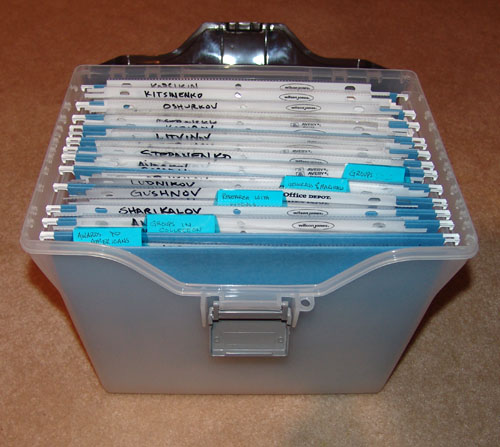
 0
0 -
Thanks, I guess I will have to ask where the citaion is, or why I didn't get it.
For the pre-WW2 For Valor, I've never seen a citation for one of those before. Award card yes, citation, no. I don't think they exist in the central archives. The other citation may not exist either... As I said in the previous post, it may well have been destroyed at the front, or enroute to the rear... the early war citations are super "hit and miss" because of the huge movement of frontlines and losses of volumes of documents.
Dave
0 -
Here's one for the Suvorov 1st and 2nd Class. Unfortunately, this was all that was there (including a search of the classified files) - no citation, no nothing else - so the details of the reason for the award is forever lost....

Dave

 0
0 -
Technically, that IS the citation. For many post-war long service awards (like yours) no citations were ever written - or were at least kept. The officers were simply submitted for the award based on their length of service, the awards were made by Ukaz of the Supreme Soviet. The reason the awards were given is the top paragraph on the document that states something to the effect of "These awards are given for long and irreproachable service to the Armed Forces of the USSR" (or thereabouts) For many awards, this is all that you'll ever get on them. I've seen these documents come back for both long service awards, as well as high-end awards, such as orders of Suvorov 1st Class and so on, where I personally don't think citations ever existed.
Dave
0 -
What you've got there are two award cards, but unfortunately no citations. I'm not surprised that there isn't a citation for the Finnish War For Valor medal, but not having one for the wartime award is a bit unusual, though not unheard of. Imagine what was happening at that time on the front... the HQ could have gotten overrun and...viola...no more citation!
The best way to find out about these is to get his personnel file and service history. Somewhere in his PF there will probably be a listing of what fronts he was on, and perhaps even a synopsis of what his citations were. His autobiography will also probably state that he fought against so-and-so from such-and-such a time.
Neat piece... very early war!!! I'd love to see the citation!
Dave
0 -
Let me take a shot at the badges:
Badge 1- Badge for the veterans of the 1st Cavalry Army (or was it Division?) from the Russian Civil War. When my contact bought this group from Kravchenko's son (a certain General Major Kravchenko) he was beside himself with this badge. In fact, his first e-mail was something to the effect of: "Look, I got this badge! It came with a nice group to a general, but look at this badge!" I still don't have a clue why Kravchenko had this badge (he obviously was too young to be a RCW vet) but apparently it's quite rare. Avers No 5 lists it as a $15-$20 badge... The price is meaningless really, but consider that it lists the October Revolution as a $30-$40 medal, you get a rough estimate of worth.
Badge 2- Veteran of the 2nd Guards Army
Badge 3- Veteran of the 116th Karkhovskaya Rifle Division
Badge 4- 50th Anniversary of the Kiev Military Academy in honor of M.V. Frunze (that's a stab in the dark at what VOKU means - or is it military region?)
Badge 5- 25th Anniversary of the Soviet Committee of War Veterans
Badge 6- Best I can translate it is "Participant in the Victory Gathering"... I assume perhaps a Victory Day parade in Kiev in 1985???
Badge 7- 40 Years of Victory at Stalingrad.
Hope that helps!
Dave
0 -
The ORS and first Glory 3 look good and the corresponding entries look ok, the rest is bad?
Yes, the rest are all bad.
As far as bad medals, the two Glory 3rds look okay from the pic on my monitor, as do the Valor medals. The Glory 2nd, OGPW and Red Star have all been monkeyed with.
Dave
0 -
I've got the photos from this auction in my "fake groups" file on my computer.

Dave
0 -
Here's the citation for his Red Star...
AWARD CITATION
1. Surname, name, patronymic: Leschenko, Mikhail Dmitrievich.
2. Military Rank: Captain.
3. Position, unit: Party Leader of the 93rd Independent Tank Destroyer Division of the 21st Perm Red Banner Rifle Division.
Recommended for: Order of the Red Star.
4. Year of birth: 1908.
5. Nationality: Belorussian.
6. Party Membership: Member of the VKP/b/ from 1931.
7. Participation in the Civil War, military action defending the USSR and in the Great Patriotic War: On the fronts of the Great Patriotic War since 1941, Western, Karelia and 3rd Ukrainian Fronts.
8. Has Wounds and Contusions in Great Patriotic War: Two light wounds and one contusion.
9. From What Time In Red Army: from 1936.
10. What Call-Up Station: Stalinsky Call-Up station, city of Minsk.
11. Awards (For What Deeds): Order of the Red Banner and Medal of Partisan of the Great Patriotic War 1st Class for organizing a partisan detachment and for the struggle in the enemy rear.
12. Permanent Home Address: Ukrainian Soviet Socialist Republic, Zhitomirskaya Oblast, 26 Levanevskogo Street.
Brief Description:
Comrade Leschenko has been at the front since the beginning of the Great Patriotic War. During the temporary German occupation on the territory of Ukraine, Comrade Leschenko had been active for over two years in the ?Fyodorov? partisan detachment, and for this he was awarded the Order of the Red Banner and the Medal of the Partisan of the Great Patriotic War 1st Class.
He has been with the division since September 1944 as a Party Instructor of the 93rd Independent Tank Destroyer Division. He took part in actions near Kandalakshisk, where he showed personal courage and his ability to encourage the Communists and personnel to fulfill military objectives.
In January 1945, in the area of Abo-Kaloz /Hungary/ and Shaponia with the anti-tank units, Comrade Leschenko ensured the infantry?s movement forward, having repelled two counter attacks from armored vehicles. By skillfully placing the Communists and members of the Komsomol between subordinate units and by showing his personal combat example provided for the fulfillment of military objective set for the Division.
Comrade Leschenko deserves to be awarded the Order of Red Star.
Head of Political Instruction Department of the 21st Perm Red Banner Rifle Division Guards Lieutenant Colonel /Puzanov/.
0 -
And his medals, reverse...
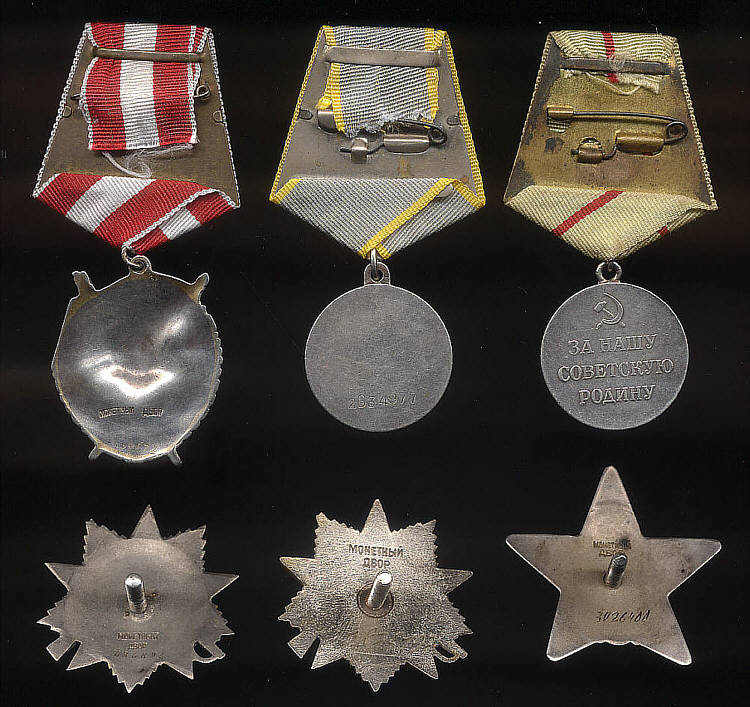
 0
0 -
His medals, obverse...

 0
0 -
A nice portrait of him, post-partisan service...
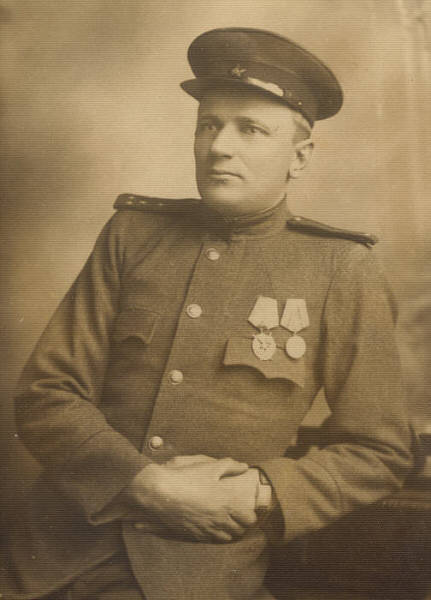
 0
0 -
His partisan veteran's document...
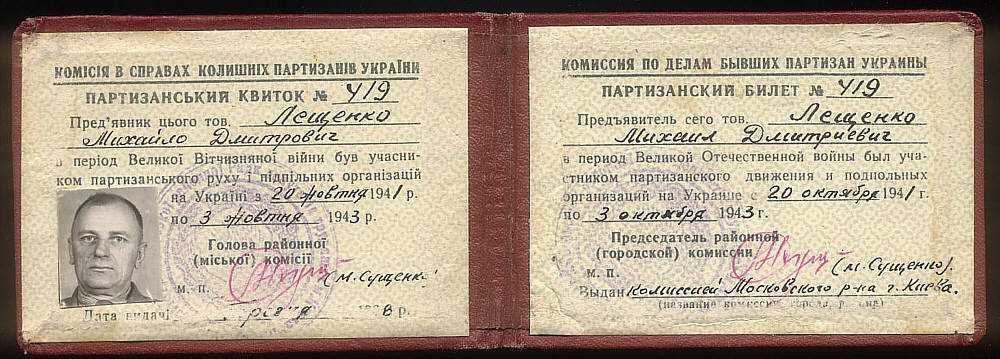
 0
0 -
His partisan document...
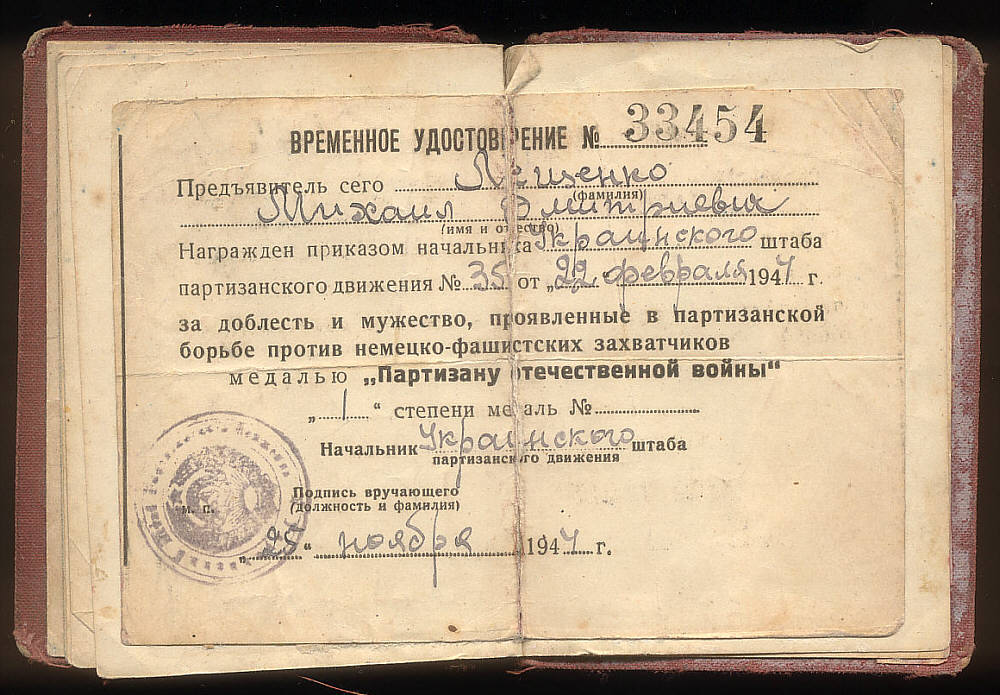
 0
0




Theories Anyone?
in Russia: Soviet Orders, Medals & Decorations
Posted
Just found a great article online that includes a large portion about the Egyptian air defenses against the IAF during the 1969-70 fighting. It seems that the Egyptians were basically getting their proverbial "arses handed to them" and that the USSR came to their rescue - at the right time, and right place - turning the tide of IAF ventures into Egyptian territory. Here's an excerpt from the article:
"Then, in March and April 1970, the Soviet Union responded to the IAF?s deep attacks by rebuilding Egyptian defenses. The Soviets began delivery of the SA-3 SAM, which had a much better low-altitude capability than the SA-2, and the improved MiG-21MF Fishbed J flown by Soviet pilots. By the end of June, the Soviets had 120 MiG-21s and 55 SA-3 batteries manned by Soviet troops stationed in Egypt. Israel, choosing to avoid conflict with a superpower, restricted its attacks to the Suez Canal region. The Egyptians and their Soviet allies began pushing the defensive belt of SAMs and AAA towards the Suez Canal. As the defenses strengthened, IAF losses mounted. A pivotal period began on 1 July, with estimates of IAF losses to the Egyptian integrated defense system ranging between seven and 20 aircraft during the subsequent five
weeks until the cease-fire on 7 August.
"By the end of the War of Attrition, the IAF had flown against all of the defensive systems it would face three years later in the Yom Kippur War. Even the SA-6 made an appearance just before the cease-fire, shooting down an F-4 on 3 August 1970. The combination of radar-guided SAMs, manportable SA-7s, and radar-directed AAA such as the ZSU-23-4 made the airspace over the Suez Canal especially deadly for attacking aircraft, as indicated by the IAF?s sharply increased loss rate during the last weeks of the conflict."
The article can be found at: http://aupress.au.af.mil/CADRE_Papers/PDF_Bin/carter.pdf
I don't know if this fellow had an SA-6 battery together with his AA defense guns, but it would make sense that being a Soviet advisor he might well have been in charge of a mixed battery and thus have been responsible for the F-4 shoot down on 3 August. That would also explain the breaking-of-the-speed-of-light speed at which the award was approved - the proof of the first successful combat use of the SA-6!
WOW - Just goes to show what you can find from research!
Dave